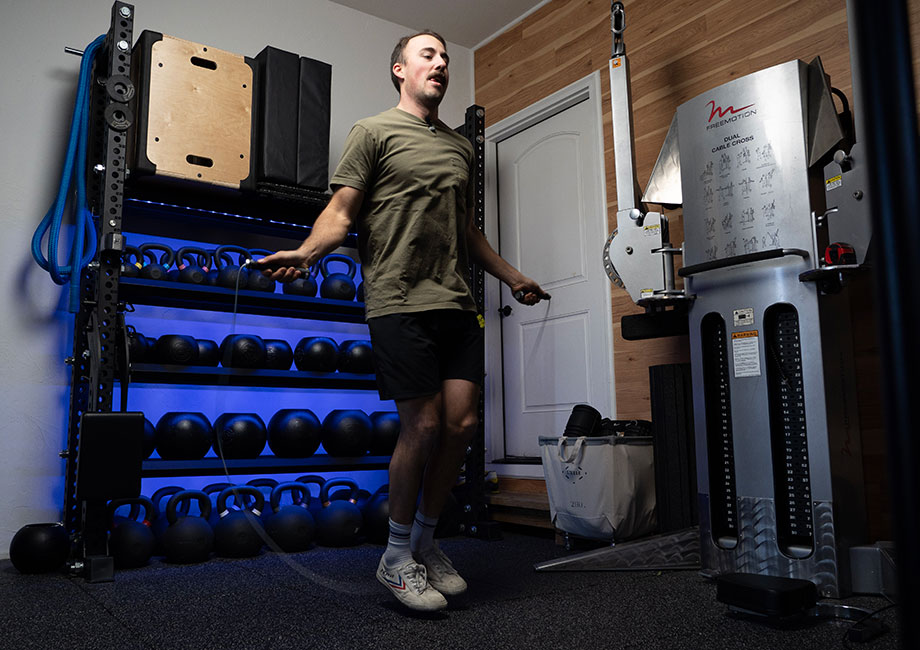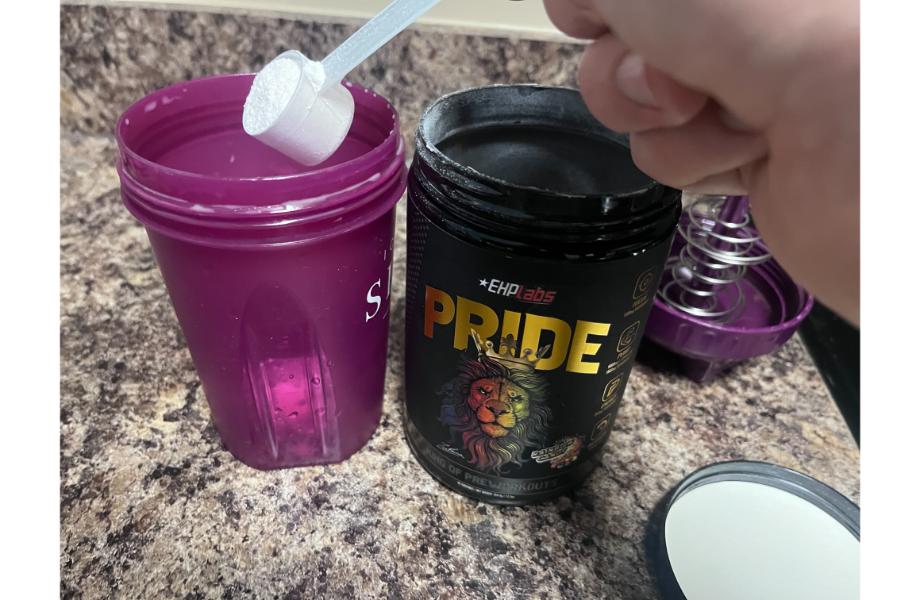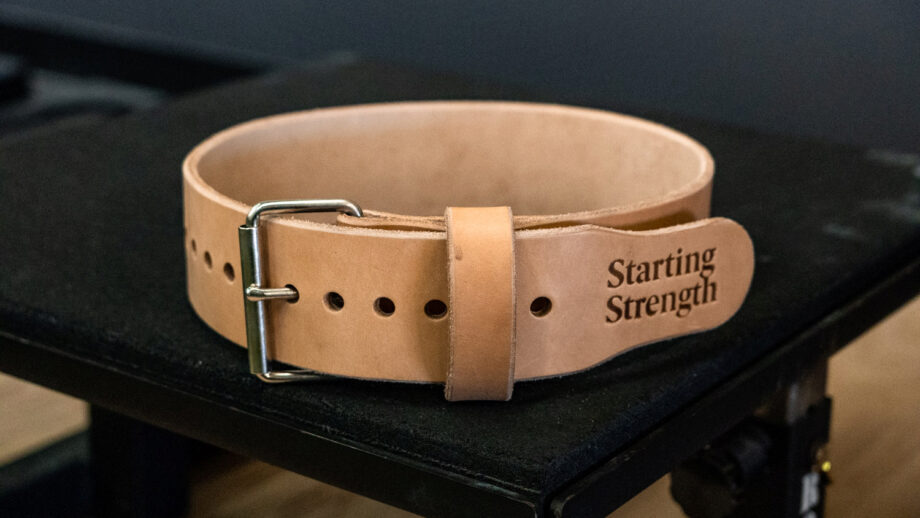The double under strikes fear into the hearts of many CrossFit beginners and novices alike. Whenever it rears its ugly head in the WOD, you can feel a sense of trepidation envelop the box. We can’t blame you guys; double unders are hard! Like, really, really hard!
RELATED: A Beginner‘s Guide to CrossFit Exercises
For those not in the know, the double under, sometimes abbreviated as “dubs,” is a jump rope technique where the rope passes twice beneath your feet during a single jump. While daunting, there are many benefits associated with doing double unders—even if you’re not on a journey to become the next CrossFit Games champ.
Kate Meier, NASM-CPT, USAW-L1, CF-L1, and GGR head of content, provides a step-by-step tutorial to help you learn double unders with proper form, program these bad boys into your next workout, and plenty more!
How to Do Double Unders
Muscles worked: Quadriceps, hamstrings, calves, glutes, shoulders, arms, core
How to do it:
- Stand with your feet approximately hip-width apart, holding the handles of your jump rope at your sides with a loose but firm grip. You want your palms facing out, core tight, shoulders down, elbows tucked into the body, and the rope positioned behind your heels.
- Jump a few inches into the air, simultaneously using your wrists to flip the rope over your head. If done properly, the rope should pass twice beneath your feet before you land.
- Land on the balls of your feet and immediately rebound into the next rep.
- Continue for the desired duration or number of reps.
RELATED: Best Jump Ropes
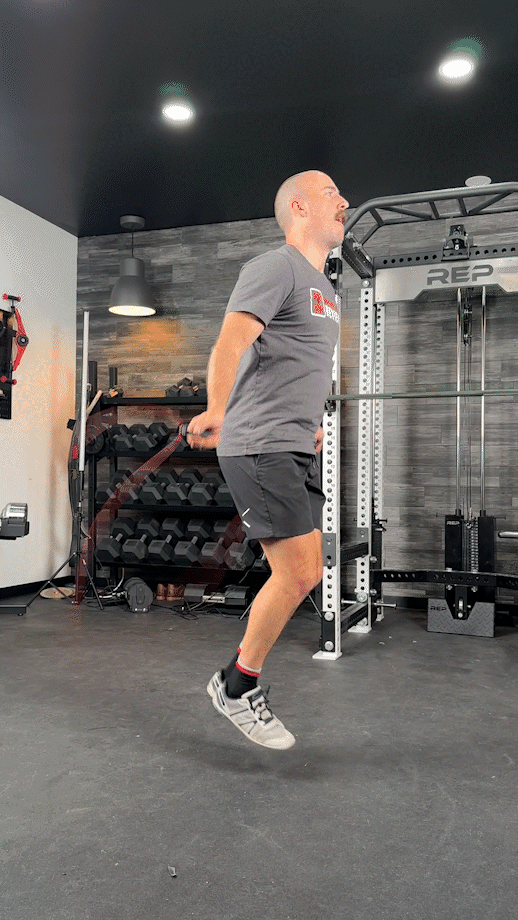
Trainer Tips for Form
That quick step-by-step may seem succinct if this is your first time trying double unders. While they appear straightforward, they’re notoriously frustrating. But with any new skill, once you understand the mechanics, it’ll become easier over time.
Here are a few more tips to help you get that rope-jumping technique down pat.
Start Small with Single Unders
What do we do in fitness when things are beyond the scope of our abilities? We break them into bite-sized chunks so we’re not ripping our hair out worrying about what we can’t do. Instead, we focus on what we can do, so we’re learning and getting a good workout while we’re at it!
So, if you don’t know how to jump rope or are new to jumping rope, starting with double unders is a fool’s errand. Practice single unders until you can easily knock out an unbroken set of fifty or more, then progress to power jumping.
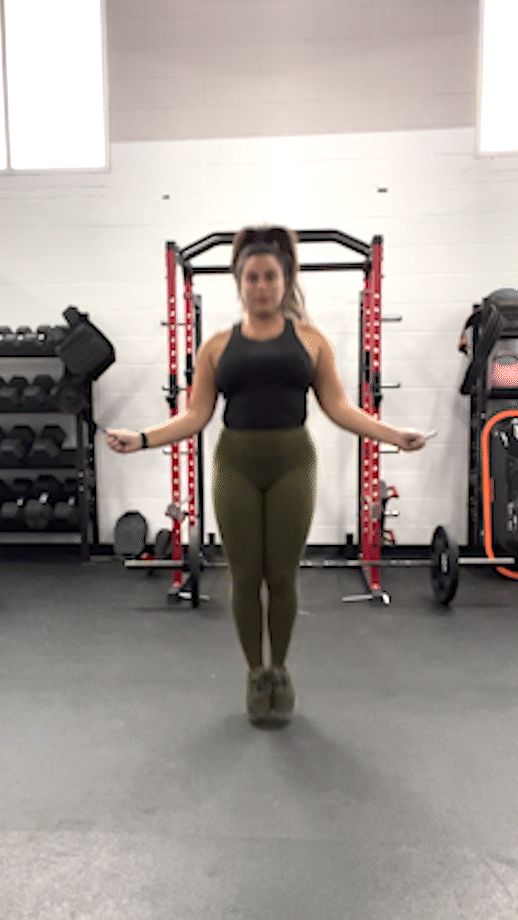
Practice the Power Jump
A well-executed double under is a thing of beauty, appearing almost effortless while, in actuality, there’s kind of a lot going on. One of those things is jumping high enough to allow the rope time to travel twice beneath your feet in the first place.
“Before progressing from single unders to double unders, I advise practicing power jumping,” says Kate Meier NASM-CPT, USAW-L1, CF-L1. “We take the rope out of the equation and focus on getting a big jump, so when we do add the rope back, we’re already acquainted with the movement mechanics.”
Power jumping is more than just the jump; it’s also about the landing. We want to get our bodies familiar with landing on the balls of our feet and springing right back into action. As with plyometric exercises like box jumps, we’re touching down only for a split second before exploding back into the air for the next rep.
RELATED: Box Jump Workout
A Flick of the Wrist
Someone successfully stringing double under reps together doesn’t appear to be moving much beyond that big jump and that crazy fast rope flying over their heads. That’s because the rope’s movement is derived from a simple flick of the wrist.
Using your wrists rather than your whole arm helps you conserve energy, but, more importantly, it keeps you from catching a rope to the back of the head or the shins. As our arms travel away from the body, the rope is pulled taut, taking away the slack it needs to clear your body and continue along its path.
So, don’t let your arms float away from your body as you rack up the reps. You want them relaxed and tucked in tight to your torso.
What are the Benefits of Double Unders?
Learning to do double unders lets you Rx CrossFit WODs, but that’s not the only benefit of including double unders in your jump rope workouts.
Burns Calories
A 2021 study published by Harvard Health Publishing1 found that vigorously jumping rope for thirty minutes burns approximately 340 calories for a 125-pound person, 421 calories for a 155-pound person, and 503 calories for a 185-pound person.
So, doing double unders burns double that, right?
Well, no. That’s not really how that works, but we know that expending the energy to perform that extra high jump and swing the rope for double the revolutions could only increase the number of calories you’re burning.
Reduces Risk of Cardiovascular Disease
Jumping rope raises your heart rate, which means—in addition to burning calories—you’ll be increasing your cardio capacity and VO2 max.

According to a 2019 study published in the European Journal of Applied Physiology2, regularly jumping rope may also help reduce your risk of cardiovascular events.
RELATED: Jumping Rope Vs Running
Enhances Sport Performance
Double unders specifically offer a substantial upside to most athletes.
Since you’re supposed to spring right back into the air after touching down, they’re categorized as a plyometric exercise, which helps build explosiveness and directly translates to sprints, Olympic weightlifting, and other sport-specific movements.
A 2015 study in the Journal of Strength and Conditioning Research3 found that elementary-aged school children who showed proficiency with double unders also exhibited improved performance during 20-meter sprints.
A 2020 study in the International Journal of Sports Physiology and Performance4 found that endurance runners using jump rope training as their regular warm-up improved “3-km time-trial performance, jumping ability, [reactive strength index], and arch stiffness.”
RELATED: Sprint Workouts
Common Double Unders Mistakes
You’re going to have a hard enough time nailing your first double under as it is. Keeping a keen eye out for these mistakes may help spare you some frustration along the way.
Improper Jumping Form
Many trainers equate the kind of jump used during single and double unders as a “pogo stick” jump. You take off from the floor with your body essentially forming a straight line from the top of your head to the tips of your toes.
As we do our best to wrap our heads around the insanity that we refer to as proper double under form, we wind up doing some funny things to deviate from that picturesque pogo stick jump form.
The first perpetrator is the pike jump, which involves creating a hollow body and pointing your toes forward, similar to the gymnastics pike jump. Many of us do this subconsciously, believing we’ll evade the rope by getting our feet out of the way.
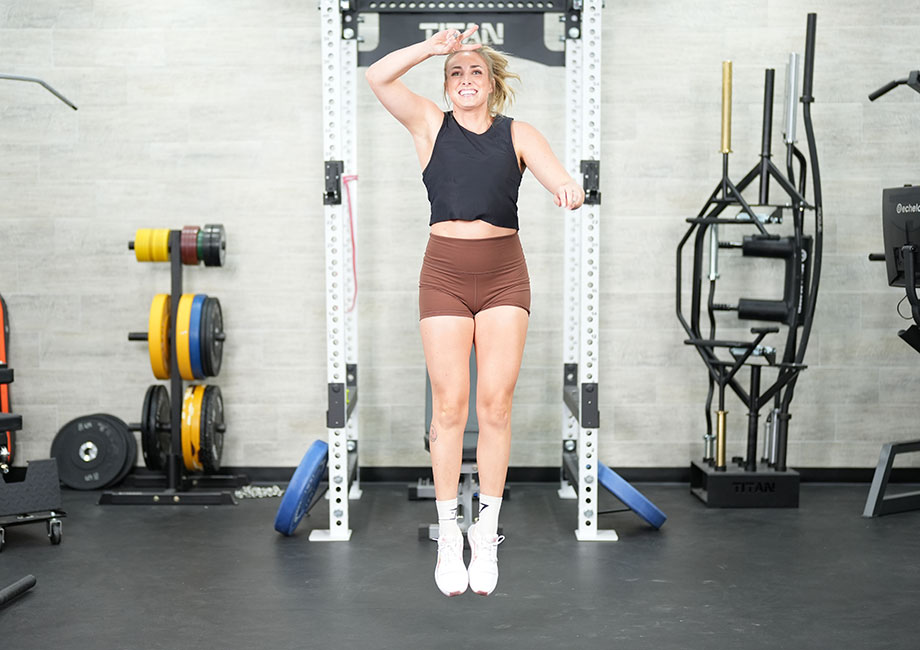
“You’re actually more likely to slap your shins with the rope if you bring your feet forward,” says Kate Meier NASM-CPT, USAW-L1, CF-L1. “Because you bring your feet forward, you’re interfering with the rope’s arc, making it more likely to whip you and break your streak.”
The other common jumping mistake is donkey kicking. It’s a lot like pike jumping, except this time, you’re bringing your feet back behind you to spare yourself from smacking your shins.
“You probably will avoid the rope if you’re donkey kicking, but it’s a giant waste of energy,” says Kate. “Even if you eke out a few reps with this form, you’ll be hard-pressed to string together larger sets of consecutive double unders, diminishing the effect of the workout.”
So, to maximize your chances of getting the technique right, it’s the pogo stick or bust.
Not Jumping High Enough
How you jump isn’t the only thing you need to think about during double under sets; how high you jump is equally, arguably more, important.
A swift flick of the wrist helps the rope travel faster and make that second revolution, but it’s moot if your jump is too low. If you’re landing before the second revolution finishes, jump a little higher.
You don’t need “about to dunk a basketball” height, but you need more height than you’d use for a single under.
RELATED: Conditioning Workouts
Inconsistent Rope Speed
When performed properly, doing double unders is hypnotically rhythmic. There’s a lot of beauty to behold if you have the pleasure of seeing someone do double unders, and it’s endlessly satisfying once that someone is you.
It’s easy to get stressed mid-set and start picking up speed, swinging the rope erratically to hold onto your streak as long as possible.
“Double unders are all about keeping cool under pressure,” says Kate. “They seem frenzied, but stringing together large sets of consecutive double unders requires complete composure.”
How to Program Double Unders
As a technique-heavy cardio conditioning exercise, there are many ways to approach the double under. CrossFit WODs incorporate double unders to sap your energy reserves and keep your heart rate spiked.
For example, here’s one of the infamous benchmark “CrossFit Girl WODs” that uses double unders to (literally) keep you on your toes while you train.
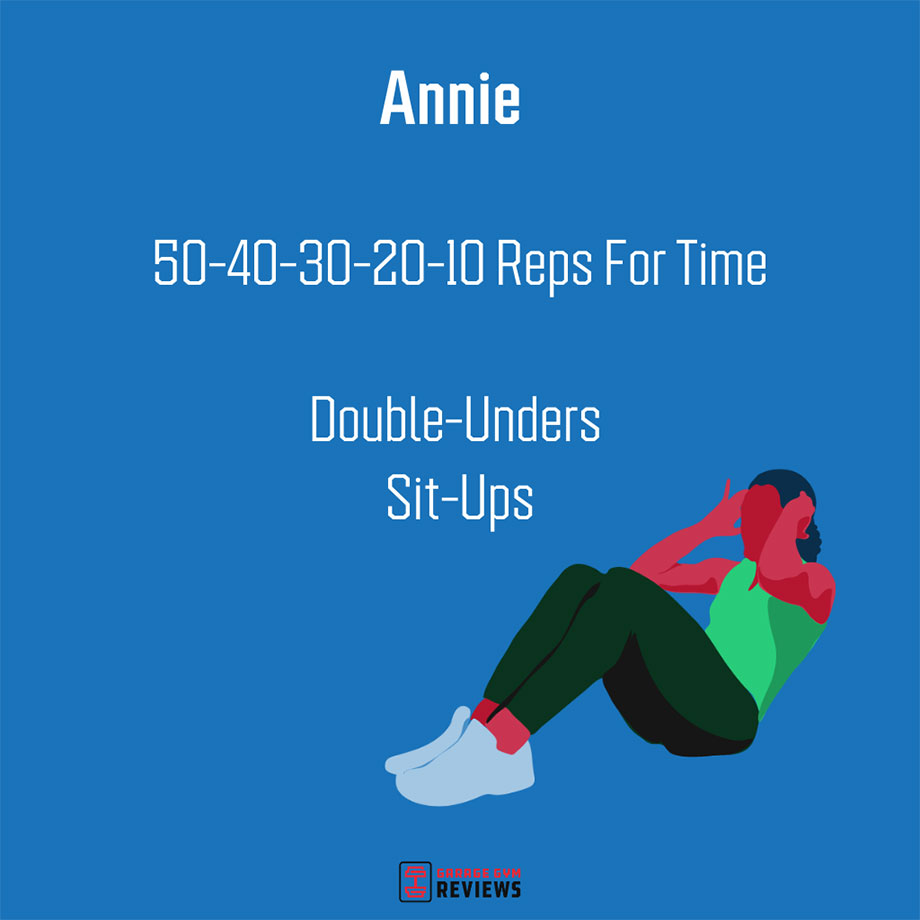
Your reps don’t have to be unbroken to count in the Annie WOD, but obviously, spending less time stopping and starting again will only help your score. Annie calls for sit-ups, but adding other bodyweight movements like push-ups, pull-ups, or bar muscle-ups make a good combination.
Weightlifting movements are in bounds, too. Back in 2016, the then GM of the CrossFit Open, Dave Castro, threw together a dastardly AMRAP (“Open 16.2”) involving toes-to-bar, double unders, and squat cleans that became progressively heavier each round. Dastardly, indeed.
“Double unders pair well with most other exercises during conditioning workouts,” says Kate Meier NASM-CPT, USAW-L1, CF-L1, “but they’re also highly effective on their own. Set a timer for five minutes and try to get 100 double unders. If you succeed, shoot for 110 next time, or 150, and so on and so forth.”
RELATED: How Long Should I Jump Rope?
How to Select a Jump Rope for Double Unders
Any old jump rope would do for Double Dutch back in the day, but you’ll need something a bit more specialized if you want to have the best chance for success at learning and doing double unders.
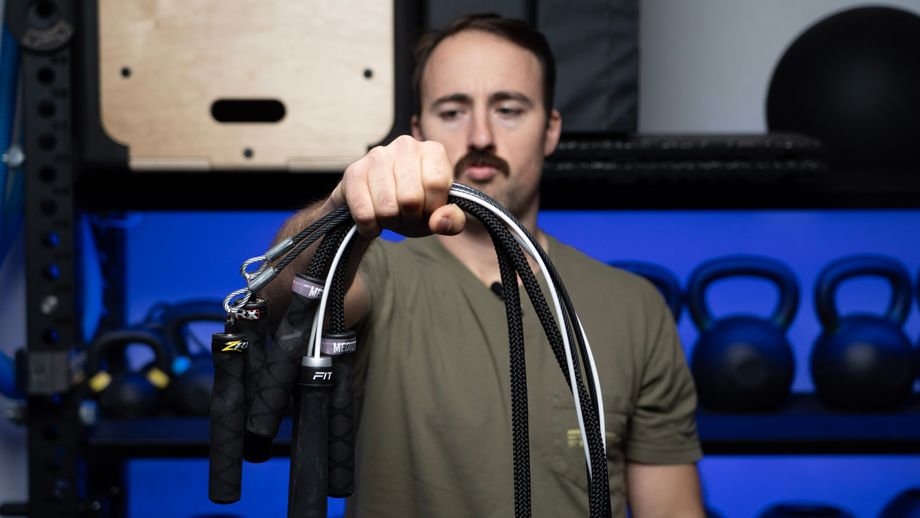
Thankfully, your pals here at GGR already tested tons of ropes, from speed ropes to smart ropes to weighted jump ropes, in order to handpick a jump rope for learning and performing double unders.
WOD Nation Double Under Speed Jump Rope
“My favorite jump rope is the WOD Nation Double Under Speed Jump Rope,” says Kate. “I’ve had mine for five years and counting, and I have no complaints.”
Truly, the WOD Nation is the complete package. For a modest $20 price tag, you get a light yet durable coated wire cable rope made to withstand use and abuse. As a speed rope, the WOD Nation features ball bearings that ensure a smooth and speedy rotation. For seasoned jumpers, that’s a godsend, but beginners may wind up with more welts than wins using something with this high performance from the jump.
CrossRope Get Lean Jump Rope Set
Our pick for the best jump rope for learning double unders is the CrossRope Get Lean Jump Rope Set. What makes this rope so effective at helping teach proper double under rhythm and technique is that it is lightly weighted.
Using a weighted rope may seem counterintuitive to learning double unders, but it provides a feel that gives real-time feedback to the jumper, helping them achieve an awareness that’s hard to get from a speed rope. In fact, a study published in the Journal of Sports Medicine and Physical Fitness5 observed that using heavier ropes resulted in more significant improvements in coordination and eccentric endurance.
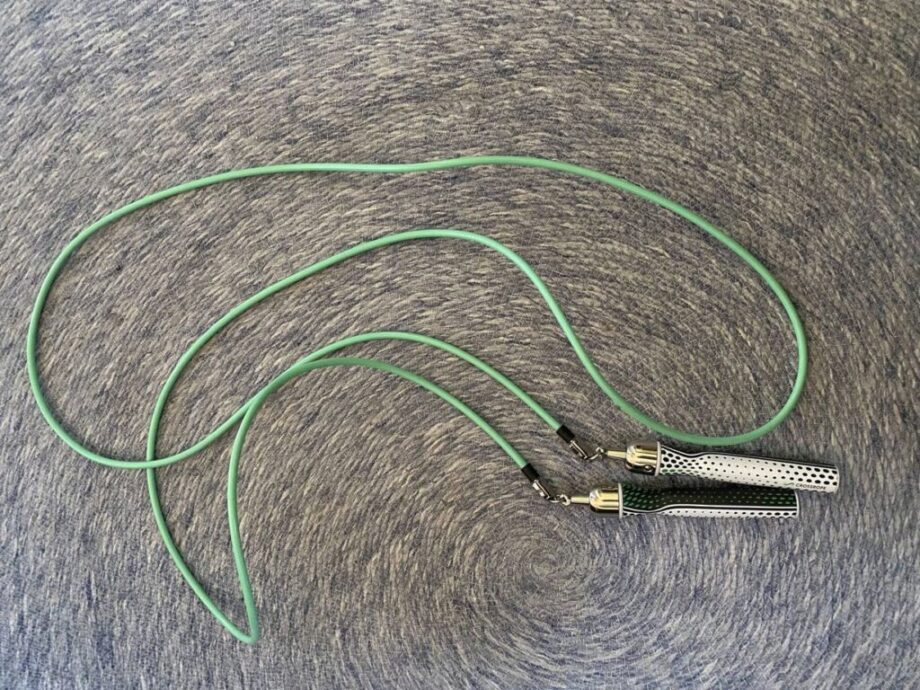
Where the WOD Nation gets a big W over the CrossRope is the price. The CrossRope Get Lean Jump Rope Set clocks in at a whopping $129.99, which is staggering compared to the conservative $20 boasted by WOD Nation.
At the end of the day, what resonates with you is a personal pursuit, and while we’ve shared a couple that are garage gym-worthy, you’ll want to try a few in each category to find what feels right for you.
Just make sure you pick the best rope length for your height!
RELATED: How to Measure Jump Rope
Who Should Do Double Unders?
The double under provides benefits to an individual’s health and fitness that make them a great option for just about anyone, but did we mention they’re really, really hard?
Because learning to do double unders requires the kind of time and dedication that not everyone is able or willing to give, they’re not necessarily the best all-purpose movement to pencil into your workout routine.
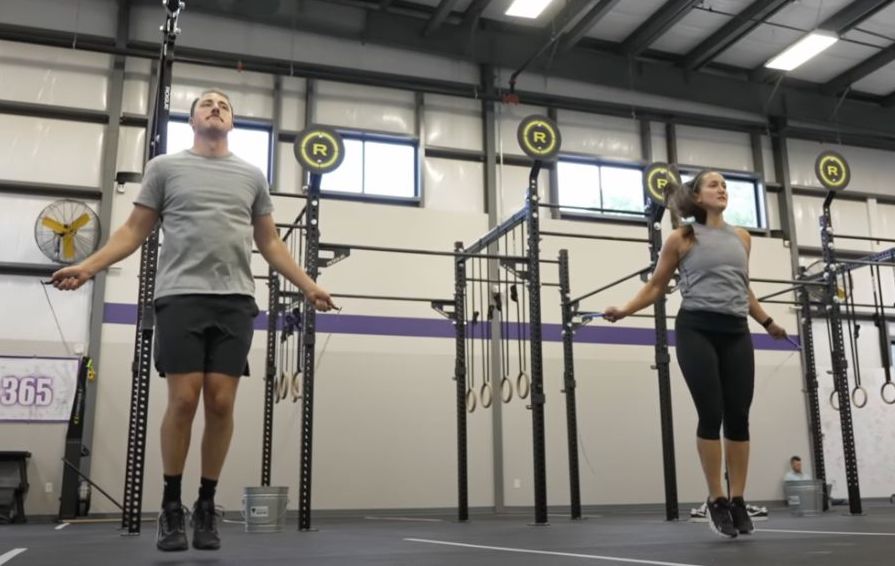
Athletes requiring seemingly endless energy reserves can benefit from incorporating double unders into their routine. Players looking to improve their explosiveness on the playing field should benefit nicely from double under training, too.
For beginners and casual fitness folks, there’s nothing wrong with sticking to single unders if that’s more your speed. Still, the thrill of finally getting your first double under is intoxicating.
We’d never wish to discourage anyone on a journey to experience that, so whether you’re almost there or far from it, try, try, and try some more until you get where you want to go!
We believe in you!
Double Unders: FAQs
What are double unders good for?
Double unders are good for burning calories and improving cardiovascular health, VO2 max, explosiveness, agility, proprioception, and coordination. They’re also super good for impressing your peers at CrossFit boxes.
RELATED: Explosive Workouts
Do you jump higher for double unders?
The rope needs to make a whole second revolution beneath your feet. Jumping higher only helps in that goal, so you should 100% be jumping higher for double unders than for single unders.
That said, don’t channel your inner Royal Airness MJ. Go a little higher than you do for single unders, but don’t go crazy.
Do double unders build calves?
Heck yeah, they do. Bouncing on the balls of your feet is an excellent way to activate the calf muscles, which translates to increased strength and size. You may also see some improvements to your vertical leap, too.
RELATED: Calf Exercises
References
- Harvard Health. Calories Burned in 30-minute Activities. Updated March 2023.
- Sung KD, Pekas EJ, Scott SD, Son WM, Park SY. The effects of a 12-week jump rope exercise program on abdominal adiposity, vasoactive substances, inflammation, and vascular function in adolescent girls with prehypertension [published correction appears in Eur J Appl Physiol. 2020 May;120(5):1203]. Eur J Appl Physiol. 2019;119(2):577-585. doi:10.1007/s00421-018-4051-4
- Miyaguchi K, Demura S, Omoya M. Relationship Between Jump Rope Double Unders and Sprint Performance in Elementary Schoolchildren. J Strength Cond Res. 2015;29(11):3229-3233. doi:10.1519/JSC.0000000000000543
- García-Pinillos F, Lago-Fuentes C, Latorre-Román PA, Pantoja-Vallejo A, Ramirez-Campillo R. Jump-Rope Training: Improved 3-km Time-Trial Performance in Endurance Runners via Enhanced Lower-Limb Reactivity and Foot-Arch Stiffness. Int J Sports Physiol Perform. 2020;15(7):927-933. Published 2020 Mar 12. doi:10.1123/ijspp.2019-0529
- Ozer D, Duzgun I, Baltaci G, Karacan S, Colakoglu F. The effects of rope or weighted rope jump training on strength, coordination and proprioception in adolescent female volleyball players. J Sports Med Phys Fitness. 2011;51(2):211-219.


